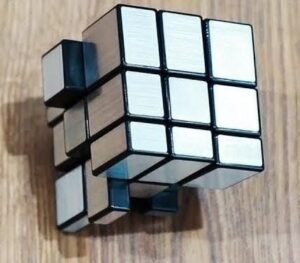The Rubik’s cube was invented in 1974 by Erno Rubik. It is a 3D puzzle that has six sides, each with nine squares. The goal is to rotate the squares so that each side of the cube is one solid colour. Solving the Rubik’s cube can be difficult, but it is possible with practice. The mirror cube is a similar puzzle, but with a different layout. The goal is to match up the colours on all six sides of the cube. While it may seem like the mirror cube would be harder to solve than the Rubik’s cube, this is not always true. In some cases, solving the mirror cube can be easier than solving the Rubik’s cube.
Table Of Contents
- 1 1. Mirror cubes are harder than Rubik’s cubes because they have more pieces and moves
- 2 2. The most common way to solve a mirror cube is the same as the most common way to solve a Rubik’s cube
- 3 3. There are many different ways to solve a mirror cube, but only a few ways are considered “standard”
- 4 4. Most people who can solve a Rubik’s cube can also solve a mirror cube
- 5 5. The difference in difficulty between the two cubes
1. Mirror cubes are harder than Rubik’s cubes because they have more pieces and moves
There are many different types of Rubik’s cubes available on the market. The standard Rubik’s cube has six sides, each with a different colour. However, there are also mirror cubes, which have an additional six mirrored sides. Aside from their appearance, the two types of cubes are essentially the same. They both have nine pieces that need to be arranged in order to solve the puzzle. However, because mirror cubes have more pieces, they are actually harder to solve than regular Rubik’s cubes. This is because there are more possibilities for where the pieces can go, and it is more difficult to determine which piece goes in which slot. If you’re looking for a challenge, try solving a mirror cube!
2. The most common way to solve a mirror cube is the same as the most common way to solve a Rubik’s cube
A Rubik’s Cube is a 3-D combination puzzle. The most common way to solve it is by completing the first row of squares on each face with colours in opposite positions so that every row and column adds up to 21. However, there are many different ways to solve a Rubik’s Cube. In this blog post, we will discuss one of these methods. specifically, the most common way to solve a mirror cube.

3. There are many different ways to solve a mirror cube, but only a few ways are considered “standard”
When it comes to solving the mirror cube, there are many ways to do so. However, only a few of these methods are considered acceptable by most cubers. In this post, we will take a look at some of the most popular ways to solve the mirror cube, as well as some of the less common techniques that are used by more experienced solvers. We’ll also discuss why certain methods are more popular than others and how you can improve your own solving times using these techniques.
4. Most people who can solve a Rubik’s cube can also solve a mirror cube
A Rubik’s cube is a six-sided, three-dimensional mechanical puzzle that scrambles coloured squares on each side. It has been around since 1974. A mirrored cube is the same as a Rubik’s cube, but with different colours on opposite sides. Many people can solve a Rubik’s Cube, but not many people know how to solve a mirror cube. It is the same process as solving a Rubik’s Cube, but you have to remember which colours are on opposite sides of the mirror cube. For example, if the red square is on the right side of the mirror cube, then the green square will be on the left side of the mirror cube, the blue square will be on the top of the mirror cube, and so on.
If you are able to solve a Rubik’s Cube, you should be able to solve a mirror cube. It is the same process, but just in reverse. Instead of making all the colours line up on one side, you are making all the colours line up on opposite sides.
5. The difference in difficulty between the two cubes
Rubik’s Cube is a popular toy that has many variations. In this post, we will explore the difference in difficulty between the two cubes. The standard Rubik’s Cube has six faces with each face having nine squares. The goal is to rotate all of the squares so that they are all the same colour. There are 43 quintillion possible combinations, but only one correct solution
The Rubik’s Revenge (or 4×4) cube has four faces with each face having nine squares. The goal is to rotate all of the squares so that they are all the same colour. There are 3,674,160 possible combinations, and there are 43 solutions.
The standard Rubik’s Cube is more difficult to solve than Rubik’s Revenge. Although, both cubes are quite challenging because there are so many paths to take and you have to be careful about how you turn the sides or you will make a mistake.
If you’re looking for the best mirror cubes, Cubelelo is the place to go. We offer India’s largest selection of high-quality puzzles and other brain teasers, so you can find the perfect one for your needs. Whether you’re a beginner or a seasoned puzzle enthusiast, we have something for everyone.
